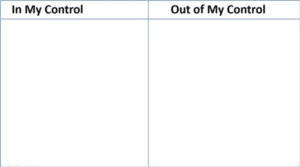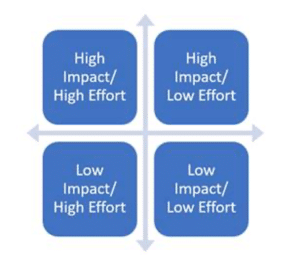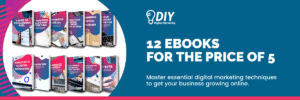Happy Wednesday team
A raft of economic data came out last week, a mixed bag of good and bad news and, as always, the devil is in the detail. While we find ourselves officially in a recession, our GDP decline was not as bad as initially anticipated, revealing a greater than expected level of resilience in our economy. Naturally, some industries have been hit harder than others and we can expect border closures and an eventual end to wage subsidies to continue to take their toll on many for some time to come. Which brings us to this week’s GROWisdom: “Uncertainty is the new certainty”.
We discussed this theme in the webinars we hosted during Alert Level 4 lockdown and it was interesting to see this idea picked up by some media outlets last week, including this article from the NZ Herald. Essentially, it means we need to be prepared to continue with ‘the grind’ we have become used to in 2020 for some time to come. Be prepared to sit in the discomfort of not knowing what’s around the corner. Be prepared to invest in profitable marketing, even when it feels like a risk, and be prepared to change tack with the release of new information, or conditions.
And before you think of the ongoing grind as ‘more bad news’, consider the crew on an America’s Cup boat, it’s the grinders who are often the fittest…
What’s driving our newfound uncertainty?
The uncertainty we find ourselves grinding within today is driven by a few things including changes in customer behaviour, the ongoing impacts of border closures, the positive return of kiwi talent from overseas (which is boosting the housing market too), the unknown of future changes to Alert Levels, the impact of Government interventions winding up or changing, the flow-on impacts from job losses, changes in competition and banks’ credit risk appetite…just to name a few. She’s not a short list!
Amidst all the uncertainty however, there’s one certain: New Zealand’s economy is going to be smaller for longer. While the impact of COVID-19 on GDP to date has not been as large as expected, it’s still the largest decline we’ve ever experienced.
Control what you can, let go of what you can’t
Whenever there is uncertainty, I always come back to the same strategy, “control what I can control and let go of what I can’t control.”
I recommended spending some time physically writing a list for yourself and your business to bring some clarity on where your time and energy is best spent.

So, what can business owners control today?
1/ Control your expectations: Be prepared to ‘grind’ out the balance of 2020 and be prepared for the same in 2021. You never know, we might get a pleasant surprise.
2/ Control every dollar of expenses: Make sure every dollar you spend contributes to more than a dollar in profit – if it doesn’t, reallocate that expense to profit-generating activities.
3/ Control how well you listen to your customer: Get closer than ever to your customers, your potential customers and your competitors – you will find opportunity if you listen closely.
4/ Control how you invest in marketing: Double down on profitable cashflow marketing activities. You will probably find some of your competitors mistakenly pulling back on marketing and looking down the barrel of the ‘cashflow spiral’.
5/ Control your ‘why’ by asking yourself two questions:
1/ How much profit do I want to generate in the next 12 months?
2/ When and for how much do I want to sell this business?
Use your answer to these two questions in the context of both day-to-day and strategic decision making. Ask yourself ‘does this decision help my business achieve goal 1 and 2?’ If the answer is ‘yes’, go ahead. If the answer is ‘no’, let it go and move on.
To help you maximise the business value you create for yourself, we will be talking a lot more about question 2 as we move into 2021 – watch this space.
Finally, we recommend controlling what you prioritise: Everyone one of us has limited resources – time, cash, staff, physical space etc, and we often have a large list of competing priorities. Be clear on what’s worthwhile.
Sorting the wheat from the chaff

To help prioritise actions, people and expenditure, I find this tool above very useful.
In my business, we get our team together, list all our priorities and opportunities and then categorise them into ‘amount of effort’ and ‘size of impact’.
The high impact/low effort ones become our ‘must dos’ and then we prioritise between the high impact/ high efforts and low impact/ low efforts, often cutting some from the list. And just about every time, we scrap the low impact/ high effort ones due to resource constraints.
Always make sure the customer, or potential customer, is at the centre of this activity; What do they need and what will they pay? Can we deliver that profitably?
So, my final tip, and one I’ll repeat again and again: Take a walk in your customers’ shoes and make every decision in the context of these customers and the answers to the two questions in point 5 above (your ‘why’).
No matter where your business is at, you can seize the opportunity of this upcoming period of grinding and get your business the fittest it ever has been – don’t miss the opportunity!


